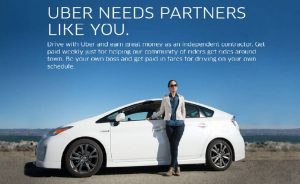by Jon LeSage, editor and publisher, Green Auto Market
Here’s my take on the 10 most significant and interesting occurrences during the past week…….
- Ford announces seven of 13 electrified vehicles: Ford CEO Mark Fields gave a speech this morning announcing the introduction of an all-new battery electric small SUV, coming by 2020, which has been engineered to deliver an estimated range of at least 300 miles. It’s one of seven of 1
 3 new global electrified vehicles the automaker plans to introduce in the next five years, including hybrid versions of the F-150 pickup and Mustang in the U.S., and a plug-in hybrid Transit Custom van in Europe. A high-volume autonomous hybrid vehicle designed for commercial ride hailing or ride sharing will be launched globally in 2021, starting in North America. Ford will also launch two new, pursuit-rated hybrid police vehicles. The automaker will be adding 700 direct new U.S. jobs and investing $700 million during the next four years, creating the new Manufacturing Innovation Center at its Flat Rock Assembly Plant in Michigan.
3 new global electrified vehicles the automaker plans to introduce in the next five years, including hybrid versions of the F-150 pickup and Mustang in the U.S., and a plug-in hybrid Transit Custom van in Europe. A high-volume autonomous hybrid vehicle designed for commercial ride hailing or ride sharing will be launched globally in 2021, starting in North America. Ford will also launch two new, pursuit-rated hybrid police vehicles. The automaker will be adding 700 direct new U.S. jobs and investing $700 million during the next four years, creating the new Manufacturing Innovation Center at its Flat Rock Assembly Plant in Michigan. - China cutting new energy vehicle subsidies: Makers of plug-in cars, commercial trucks, and buses will have their generous subsidies cut this year by the Chinese government in the wake of misreporting of production and sales to the government. The Ministry of Finance put caps on subsidies and increased technical specifications required to receive funding, Reuters reported. News had surfaced in September about a scandal with false reports being submitted, along with failure to meet technical requirements needed to gain more “new energy vehicle” government funding for plug-in hybrid and all-electric vehicles. Subsidies have been considered to be primary driver for making China the world’s largest market for EV sales. Busmakers had their subsidies cut in half, from a previous cap of 600,000 yuan (about $86,000) down to 300,000 yuan ($43,000) per vehicle. For plug-in passenger cars, incentives started being reduced with a 20% drop in 2017. Medium and heavy-duty trucks, and specialized-use vehicles will be capped at 150,000 yuan ($21,584). Local government subsidies will be capped at 50% of what the national government is making available. Technical specs include measuring by energy density and range requirements. Fast chargers for buses will receive more in subsidies. The national government has also been adding automakers to its list of companies being granted licenses to manufacture plug-in vehicles and receive subsidies. A division of Jiangling Motors became the seventh company allowed in the system in late December; Chinese auto parts supplier Wanxiang Group, owner of Karma Automotive and A123 Systems, was added earlier in the month.
- Nissan plug-in hybrid: Nissan may be manufacturing a plug-in hybrid electric vehicle, according to a senior Nissan official. The collaboration forged last year between Nissan-Renault and Mitsubishi would mean that the new plug-in model will use technology from the Mitsubishi Outlander PHEV. Takashi Shirakawa, head of R&D for Nissan Europe, said that the Nissan plug-in hybrid will use Mitsubishi technology. The Outlander PHEV has become the top-selling plug-in electrified vehicle sold in Europe. It’s due to come the U.S. sometime this summer. Nissan so far has had all-electric models in its lineup, the Leaf and the e-NV200 concept van. In the first part of December, Japan’s Nikkei reported that Nissan-Renault will be collaborating with Mitsubishi on a common EV platform. The global automaker said the goal of the common framework was to reduce the price of an EV by about 20 percent, and more in line with the price of gasoline-powered vehicles. Key components, such as the motor, inverter, and battery, will be shared by Nissan-Renault and Mitsubishi.
- Self-driving Fusion Hybrid: Ford will be showing its next-generation Fusion Hybrid with autonomous vehicle features at CES starting this week in Las Vegas. It’s said to have more computing power, advanced Lidar sensors, and a more targeted field of vision than previous self-driving test Fusions. Ford is using the car as part of its larger strategy to have production-ready fully autonomous vehicles available in the next few years. New features along with the enhanced Lidar system include cameras and radar, algorithms for location and path planning, computer vision and machine learning, highly detailed 3D maps, and adequate computing space and power. “The car must be able to perform what a human can behind the wheel,” said Chris Brewer, chief program engineer for Ford’s Autonomous Vehicle Development, adding that “our virtual driver system is designed to do just that.”
- From Volt to Bolt: It’s taken a little less than 10 years from the introduction of the Chevy Volt concept at the 2007 Detroit auto show until affordable, long-range electric Chevy Bolts started being delivered to the first buyers. Automotive News covered the history of these plug-in vehicles, including General Motors’ bankruptcy and the important role both the Volt and Bolt have been playing as GM has reinvented its corporate identity in the industry. It’s been over 20 years (1996) since GM launched the EV1 in very limited numbers; but that electric car has been credited many times in the history of electric vehicles; including GM now working hard at making up for having quickly pulled the EV1 off the assembly line. GM’s investment in ride-hailing firm Lyft and their joint testing of self-driving Bolts marks a landmark in the changing role automakers are taking on in electrification, autonomous vehicles, and mobility services.
- Lamborghini Urus plug-in hybrid: Lamborghini R&D chief Maurizio Reggiani said a high-performance plug-in hybrid SUV will likely be revealed in 2017 and go on sale in 2018. The Lamborghini Urus will also be released as a twin-turbo, 4.0-liter V8 model, he said. Turbocharging will be part of the performance power for the PHEV and twin-turbo V8 versions. The Volkswagen-owned sports car brand says it will become “the ultimate super athlete in the SUV segment.”
- Autopilot features added: Tesla Motors continued putting the pieces in place for its fully autonomous hardware to move forward – and to keep it integrated with the semi-autonomous Autopilot system. CEO Elon Musk tweeted Saturday about the company beginning testing Autopilot safety features through a software upload to 1,000 new Tesla vehicles that have been built with the fully-autonomous hardware. Model S and Model X vehicles built after October have the fully-automated features built in, in what Musk calls “Hardware 2;” these new vehicles had Autopilot safety features left out for testing later to make sure they’re compatible. The 1,000 vehicles received a software upload with the Autopilot safety features added over the weekend to work out any problems; and to bring them in line with older Model S vehicles that had received Autopilot hardware once it started being added in September 2014.
- Propane vehicles sales growth: Roush CleanTech has found converting and selling propane-powered school buses to be taking off in the market, along with its propane vans and heavy-duty pickups. It took the company six years to sell over 14,000 propane vehicles, but the company is on track to sell 6,000 more vehicles converted to run on propane autogas by the of 2017. The company says that it’s been able to make the business case that propane makes for a better, more cost effective alternative fuel than compressed natural gas.
- LCFS summit: Calstart is holding the fifth annual Clean, Low-Carbon Fuels Summit on February 27-28, 2017, in Sacramento. The Summit is known for being one of the premier gatherings which brings together legislators, regulators, and industry executives to discuss what is needed for the low-carbon fuels industry. This year’s program will jointly focus on opportunities for California, as well as developments happening in other states and Canada. We will also be taking stock of what the incoming US presidential administration means for the clean, low-carbon fuels industry. For the first time, the Summit is open to the public. You can receive the early bird rate if you register by January 14.
- FCA automated electric car: Fiat Chrysler Automobiles unveiled a new, semi-autonomous electric minivan at CES in Las Vegas yesterday. Called the Chrysler Portal, the vehicle was “created by millennials for millennials,” according to FCA. The automaker worked with Samsung Electronics as its provider of 360 degree cameras and other sensors, and Panasonic Automotive as its supplier for infotainment, wireless connectivity and audio systems, the company said.

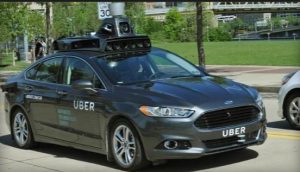 Michigan now leading the way: Last month, Michigan Gov. Rick Snyder signed a package of bills to clear the way for self-driving cars to operate on public roads and re-establish the state as the leader in automotive innovation. The Michigan bills establish regulations for the testing, use, and eventual sale of autonomous vehicle technology, and were crafted to more clearly define how self-driving vehicles can be legally used on public roadways. The new laws allow testing of vehicles without steering wheels, pedals, or needed human control – which aims to propel Michigan ahead of California, which had been the leading state in the U.S. for testing autonomous vehicles.
Michigan now leading the way: Last month, Michigan Gov. Rick Snyder signed a package of bills to clear the way for self-driving cars to operate on public roads and re-establish the state as the leader in automotive innovation. The Michigan bills establish regulations for the testing, use, and eventual sale of autonomous vehicle technology, and were crafted to more clearly define how self-driving vehicles can be legally used on public roadways. The new laws allow testing of vehicles without steering wheels, pedals, or needed human control – which aims to propel Michigan ahead of California, which had been the leading state in the U.S. for testing autonomous vehicles.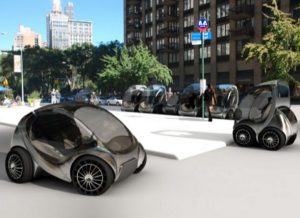 Automakers took serious steps forward during 2016 showing their commitment to mobility services and the changing identity of automakers in the near future.
Automakers took serious steps forward during 2016 showing their commitment to mobility services and the changing identity of automakers in the near future. The Federal Highway Administration
The Federal Highway Administration 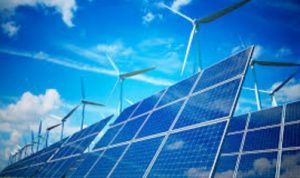 Renewables: While not yet officially announced, Scientific American just reported that renewable-energy sources such as solar and wind are expected to account for 8% of U.S. electricity-generation capacity in 2017, according to the U.S. Department of Energy. Solar growth is behind much of it.
Renewables: While not yet officially announced, Scientific American just reported that renewable-energy sources such as solar and wind are expected to account for 8% of U.S. electricity-generation capacity in 2017, according to the U.S. Department of Energy. Solar growth is behind much of it.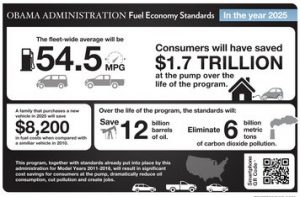 Feds differ on fuel economy rules: It appears that the Environment Protection Agency and the National Highway Traffic Safety Administration are taking different approaches to working with the new administration on the fuel economy and emissions regulations; it may also signify the Obama administration supporting the standards but encouraging flexibility with automakers on how it’s all carried out.
Feds differ on fuel economy rules: It appears that the Environment Protection Agency and the National Highway Traffic Safety Administration are taking different approaches to working with the new administration on the fuel economy and emissions regulations; it may also signify the Obama administration supporting the standards but encouraging flexibility with automakers on how it’s all carried out.  Plug-in sales trends and new car launches: Plug-in hybrid was the top-selling category over all-electric vehicles in 2016, which switched over a sales trend that had been led by the Tesla Model S and Model X, and Nissan Leaf, in all-electric vehicle sales. The revamped 2016 Chevy Volt has been the top seller in the U.S. and the Ford Fusion Energi nearly doubled its sales in November over the previous year. The Mitsubishi Outlander PHEV has been leading the electric vehicle market this year in Europe, beating the Renault Zoe and Nissan Leaf.
Plug-in sales trends and new car launches: Plug-in hybrid was the top-selling category over all-electric vehicles in 2016, which switched over a sales trend that had been led by the Tesla Model S and Model X, and Nissan Leaf, in all-electric vehicle sales. The revamped 2016 Chevy Volt has been the top seller in the U.S. and the Ford Fusion Energi nearly doubled its sales in November over the previous year. The Mitsubishi Outlander PHEV has been leading the electric vehicle market this year in Europe, beating the Renault Zoe and Nissan Leaf.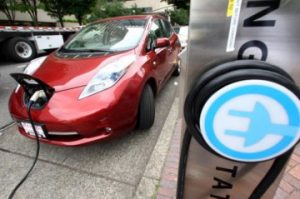 Three more automakers join EV race: The days of putting a small number of “compliance cars” in California to meet zero emission vehicle rules appear to be ending.
Three more automakers join EV race: The days of putting a small number of “compliance cars” in California to meet zero emission vehicle rules appear to be ending.  Best fuel economy rating: The soon-to-be-released 2017 Hyundai Ioniq Electric
Best fuel economy rating: The soon-to-be-released 2017 Hyundai Ioniq Electric 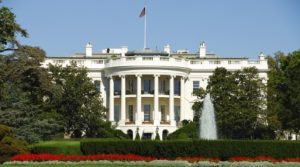 As the stunning election results settle in, speculation on the implications is pervasive through news and social media channels.
As the stunning election results settle in, speculation on the implications is pervasive through news and social media channels.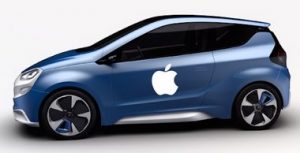 Apple backs off:
Apple backs off: 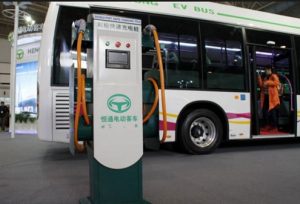 The Chinese government is taking punitive action on more than 25 vehicle manufacturers, from makers of passenger cars to buses, in a breaking scandal over subsidies granted for “new energy vehicles.” It’s one in a series of global scandals in the past year over false claims made by automakers related to regulatory compliance and subsidies for fuel economy, greenhouse gas emissions, and vehicle electrification.
The Chinese government is taking punitive action on more than 25 vehicle manufacturers, from makers of passenger cars to buses, in a breaking scandal over subsidies granted for “new energy vehicles.” It’s one in a series of global scandals in the past year over false claims made by automakers related to regulatory compliance and subsidies for fuel economy, greenhouse gas emissions, and vehicle electrification.